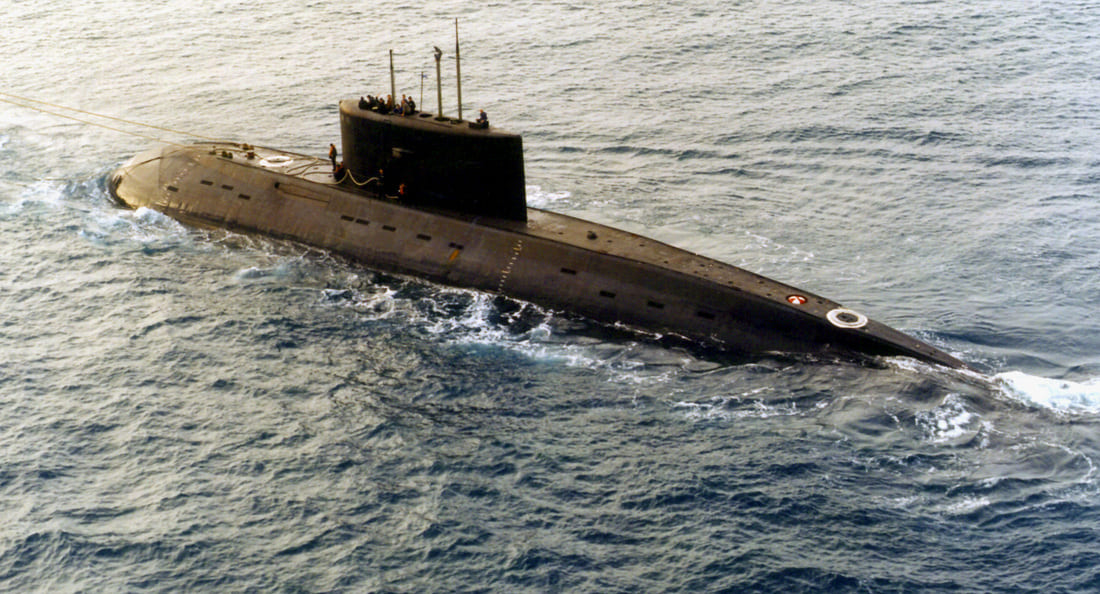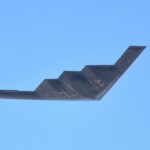Two diesel-electric submarines operated together for the first time in a publicly acknowledged China-Russia submarine patrol. Russia sent the Project 636.3 Kilo-class boat Volkhov from its Pacific Fleet. China paired it with a Kilo-class counterpart of the same basic lineage. The formation included a Russian Steregushchiy-class corvette, named Gromkiy and a submarine rescue vessel that provided safety cover. The patrol unfolded in August through the Sea of Japan and the East China Sea after the early-month bilateral naval drills, Maritime Interaction 2025.
The naval exercise phase ran from Aug 1 to Aug 5 in waters off Vladivostok and into the Sea of Japan, with mixed surface formations, diesel submarines, maritime patrol aircraft and a planned rescue vignette. Days later, the submarine pair shifted to a joint patrol profile along an agreed route, completed their tasks and returned to home waters. Russian releases claimed roughly 2,000 nautical miles covered before Volkhov berthed back at Vladivostok. Chinese outlets emphasized routine cooperation.
Japanese maritime patrol aircraft and surface units shadowed Russian and Chinese flotillas before and after the drills, and Tokyo posted day-by-day track charts of nearby warship movements. While those public bulletins focused on surface groups, they reflect the standard surveillance blanket in the region.
Defense officials confirm the joint submarine patrol followed the August exercise phase and featured diesel-electric boats rather than nuclear-powered platforms. They also confirm supporting air sorties and anti-submarine serials during the exercise itself, including coordinated patrols by Russia’s Il-38 and China’s Y-8.
Kilo-Class Operations in the East China Sea and Sea of Japan
The choice of Kilo-class submarines matters. Both navies operate variants derived from the original Soviet design, noted for low acoustic signatures at slow speed and solid littoral performance. Matching classes eases formation safety and makes underwater communications and contact-keeping simpler. The mirrored hull forms and familiar handling characteristics reduce risk when two navies attempt submerged coordination near busy shipping lanes. According to industry sources, this pairing lets crews exchange tactics with minimal disclosure of unique sensors or fire-control software.
The Kilo family still runs on batteries between snorkeling cycles and lacks the sustained sprint and payload options of newer nuclear boats. The 636.3 upgrade series in Russian service carries improved quieting and longer-range combat systems, while China’s imported Kilos are roughly analogous to earlier export fits. That unevenness may have shaped the patrol’s profile toward coastal arcs where rescue coverage and escorting surface ships could stay inside manageable distances.
The supporting surface picture around Japan through mid- and late-August shows how regional forces responded. Japanese frigates, maritime patrol aircraft and support ships took up positions to document passages through straits, publishing hull photos and track lines in public updates. This watch-standing posture is routine.
The air and surface serials earlier in August foreshadowed the undersea piece. Russian Il-38 and Chinese Y-8 aircraft practiced detection and prosecution of a “mock submarine” during the exercise week. That scenario included air-delivered targets and shipborne helicopter crews, which provided cross-cueing practice essential to avoiding blue-on-blue confusion. The drill’s rescue theme – featuring the PLAN rescue ship Xihu and a simulated emergency around Peter the Great Bay – added a safety spine to the combined workup.
Signals to AUKUS, Japan and the United States
Analysts in both Moscow and Beijing cast August’s activity as routine. Cross-correlation of official releases and expert commentary points to a signaling layer. The first public undersea pairing arrived just after the bilateral exercise series expanded to include coordinated submarine operations. The timing followed a separate headline in early August, when Washington announced a repositioning of two U.S. nuclear submarines.
Regional audiences took note. Japan reported multiple mixed formations near its waters around the same window and dispatched fixed-wing patrol aircraft and escorts. The undersea element itself stayed mostly within press statements from Moscow and Beijing, but the presence of escorts and rescue ships advertised coordination at sea.
Commentators close to Chinese naval circles have warned for years that Australia’s future nuclear-powered submarines could complicate the western Pacific undersea balance. Some analysts now argue the August pairing signals intent to develop shared undersea playbooks. That reading matches a broader pattern since 2021 surface patrols began to recur annually, and since bomber missions evolved into regular joint flights that skirt Allied air defense zones.
China and Russia have expanded maritime cooperation in northern waters since last year, including joint coast-guard patrols and naval drills. A navy that experiments with combined undersea procedures near Vladivostok may test versions of the same coordination along other arcs later.
U.S. Antisubmarine Posture and Risk Assessment
The United States faces no immediate shift in undersea threat from a single Kilo-pair patrol. The activity didn’t feature nuclear-powered attack submarines, no missile firings were disclosed and the geography remained within familiar surveillance rings. The risk lives elsewhere. First, two navies that practice underwater contact-keeping, emergency procedures and acoustic deconfliction reduce the friction that stops ad hoc cooperation from turning into operational habits. Second, a pattern of serials makes future, more complex pairings easier to stage.
U.S. and allied forces already maintain a layered ASW posture in the western Pacific. Maritime patrol aircraft fly persistent orbits from Japan and Guam. Surface combatants deploy towed arrays along chokepoints. Undersea sensors sit across straits. Japanese reporting during August shows how those layers activate in practice.
According to industry sources, Kilo-class coordination in shallow shelf seas stresses passive detection frameworks and drives higher demand for expendable sonobuoys and time-on-station from patrol aircraft. Diesel-electric boats can exploit local thermal layers and coastal noise in ways that force more sorties and denser buoy fields.
The mixed escort and rescue package deserves attention. A corvette like Gromkiy offers communications relay and surface picket duties while the submarines remain submerged. The rescue ship signals safety discipline and gives both navies confidence to attempt more ambitious profiles next time.
One small diesel-electric pairing does not alter the undersea balance. The United States and its allies still hold advantages in nuclear-powered submarine endurance, multi-static ASW networks and joint command-and-control with proven interoperability. What did change is precedent. Never before had the two navies publicly announced a joint submarine patrol with submerged coordination and an escorting safety envelope.
There is also a political-messaging layer. The undersea patrol followed an August exercise where both sides emphasized “stability” and protection of maritime economic activity, and it coincided with sharper rhetoric among great powers.
U.S. planners will watch for three indicators. First, whether future China-Russia patrols include nuclear-powered submarines. Second, whether patrol boxes migrate farther into the Philippine Sea. Third, whether combined patrols start to overlap with large joint surface deployments near Alaska or within the central Pacific transit corridors. No indicator has flipped yet. The August patrol stayed close to training ranges, used matched diesel-electric boats and came right after a scripted exercise series.
The patrol improved familiarity, tested safety nets and rehearsed basic coordination. It did not reveal cutting-edge sensors, long-range fires or blue-water endurance. Allied militaries can adapt without dramatic shifts. Training calendars already include multi-static sonobuoy work, cross-deck helicopter qualifications and P-8A rotations across northern Japan. Japanese and U.S. staff can fold likely diesel-electric patrol boxes into routine mission planning.
The real inflection point would be a nuclear-powered joint patrol. That step would imply deeper trust, risk tolerance and potential technology exposure; neither side appears ready to accept.
REFERENCE SOURCES
- https://www.defensenews.com/global/asia-pacific/2025/09/22/china-and-russia-conduct-joint-sub-patrols-should-america-worry/
- https://jamestown.org/program/first-joint-russian-prc-submarine-exercise-patrols-pacific/
- https://news.usni.org/2025/08/28/russian-chinese-submarines-sail-together-in-sea-of-japan
- https://news.usni.org/2025/08/15/russia-chinas-annual-joint-pacific-patrol-underway
- https://news.usni.org/2025/08/25/russia-china-wrap-fifth-annual-joint-patrol
- https://www.reuters.com/world/china/russian-chinese-navies-practice-destroying-enemy-submarine-days-after-trump-move-2025-08-06/
- https://theprint.in/defence/ahead-of-sco-meet-russia-china-stage-maiden-joint-submarine-patrol-in-sea-of-japan-east-china-sea/2731874/
- https://en.iz.ru/en/1931110/2025-08-04/ships-russian-navy-and-chinese-navy-went-sea-japan-conduct-exercises
- https://www.mod.go.jp/js/pdf/2025/p20250815_04e.pdf
- https://www.reuters.com/world/china/russian-chinese-navies-carry-out-artillery-anti-submarine-drills-sea-japan-2025-08-03/



